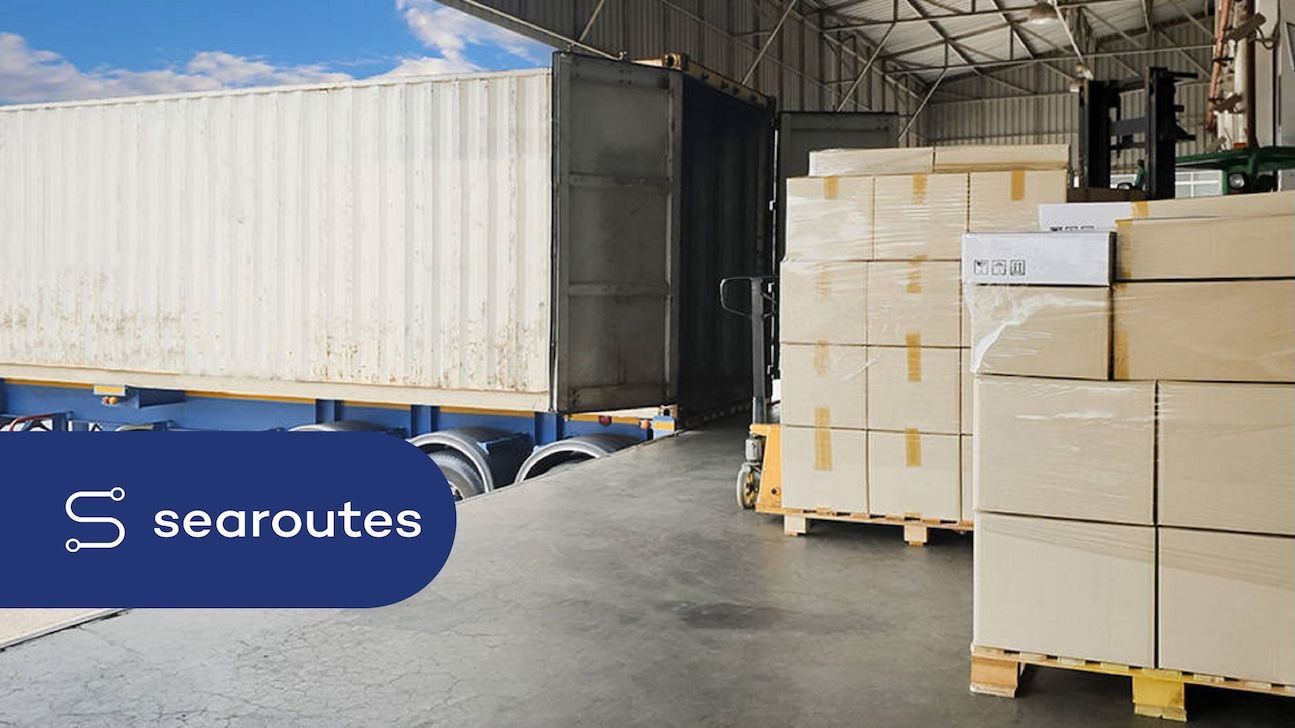
Milk Run Logistics: Sustainable Supply Chain Strategy for Efficiency & Emissions Reduction
In today’s fast-paced and environmentally conscious world, companies are increasingly focused on reducing carbon emissions in their supply chains. One often-overlooked yet highly effective strategy is the milk run logistics model. This approach not only streamlines operations but also significantly lowers carbon footprints, making it a win-win for both efficiency and sustainability.
In this article, we’ll explore the milk run concept in logistics, its benefits, real-world examples, and how innovative tools like Searoutes’ Road API are revolutionizing milk run optimization for greener distribution.
What Is a Milk Run in Logistics?
The term “milk run” originates from the early 20th century, when milkmen delivered fresh milk to households daily, collecting empty bottles along the way. This efficient, consolidated approach is now applied to modern logistics. In milk run logistics, a single vehicle makes multiple stops to pick up or deliver goods, consolidating smaller shipments into one optimised route.
Key Features of Milk Runs:
- Consolidation: Multiple pickups or deliveries are combined into a single trip.
- Frequency: Routes are repeated regularly, often daily or weekly.
- Efficiency: Reduces the number of vehicles on the road, cutting fuel consumption and emissions.
Why Are Milk Runs Used in Logistics?
Milk runs are ideal for businesses with recurring transportation needs. They offer several advantages:
1. Cost Savings
By reducing the number of trips, companies save on fuel, labor, and vehicle maintenance. Fewer vehicles also mean lower freight costs and less wear and tear on infrastructure.
2. Improved Inventory Management
Milk runs support just-in-time (JIT) and just-in-sequence (JIS) manufacturing, ensuring materials arrive exactly when needed. This minimizes excess inventory and storage costs.
3. Enhanced Reliability
Predictable, repeated routes reduce the risk of delays and improve supply chain reliability. Businesses can depend on consistent delivery schedules, which is crucial for time-sensitive industries.
4. Sustainability
Fewer vehicles on the road translate to lower carbon emissions. Milk runs align with ESG (Environmental, Social, and Governance) goals, helping companies meet sustainability targets.
5. Quality Control
Smaller, more frequent shipments make it easier to monitor quality and address issues promptly, reducing waste and improving customer satisfaction.
Milk Run Logistics: Real-World Examples
1. Automotive Industry
Auto manufacturers use milk runs to deliver parts from multiple suppliers to assembly plants. This ensures components arrive just in time for production, reducing the need for large warehouses.
2. Warehouse Operations
Within warehouses, milk runs optimize internal logistics. Workers use a single cart to pick items from various locations and deliver them to a central assembly area, improving efficiency.
3. Bulk Liquid Transport
For sensitive liquids like chemicals or food products, milk runs ensure timely and safe transport. A single specifically equipped truck collects products from multiple suppliers, reducing the risk of spoilage or damage.
The Benefits of Milk Run optimization
1. Lower Carbon Emissions
By consolidating shipments, milk runs reduce the total distance traveled, cutting fuel use and CO2 emissions. This is a key advantage for companies aiming to improve their Scope 3 emissions reporting.
2. Resource Efficiency
Fewer trips mean less packaging waste and lower operational costs. Companies can allocate saved resources to other areas, such as innovation or customer service.
3. Data-Driven Decision Making
Tools like Searoutes’ Milkrun freight Emissions provide detailed CO2 visibility, allowing businesses to track emissions per trip, or even individual item. This data supports informed decisions and transparent sustainability reporting.
How Searoutes Enhances Milk Run Strategies
Searoutes has engineered a dedicated model to calculate the emissions for individual parcels transported for the last mile, designed to report milk runs greener distribution efforts. Here’s how it works:
1. Emissions Tracking
The Searoutes Milkrun model calculates CO2e emissions for the full trip, taking into consideration the global distance as well as the individual items weight for each section of the trip . it then links the emissions data to specific customer orders. This helps companies identify high-emission routes and optimize accordingly.
2. Scope 3 Reporting
Searoutes provides ready-to-report datasets, enabling businesses to document their sustainability efforts accurately. This is essential for compliance and marketing ESG initiatives.
3. Fuel optimisation
The model enables the calculation of emissions based on different fuel used, to understand the emissions reduction possibilities. Companies can therefore easily make informed decisions on their strategies to reduce emissions from their Milk run operations.
Conclusion: The Future of Milk Run Logistics
Milk runs are more than just a logistics strategy—they’re a pathway to sustainable, efficient supply chains. By consolidating shipments, reducing emissions, and leveraging data-driven tools, companies can achieve their operational and environmental goals.
For businesses ready to embrace milk run carbon emissions reporting, solutions like Searoutes’ freight emissions solutions provide the tools needed to succeed. Connected directly via API to your systems, it seamlessly delivers the required data to report and optimize. Whether you’re in manufacturing, retail, or logistics, milk runs a smarter, greener way to move goods.
Ready to report Your Milk Runs CO2 emissions?
Explore how Searoutes can help you reduce emissions and improve efficiency. Schedule a demo today!
This post is optimised for your target keywords, including milk run logistics, milk run routing, milk run strategy, and milk run optimisation, ensuring high visibility in search engines.
Carbon emissions reduction, ESG supply chain, Green logistics strategy, Just-in-time logistics, Milk run benefits, Milk run logistics, Milk run optimization, Milk run real-world examples, Milk run routing, Sustainable supply chain